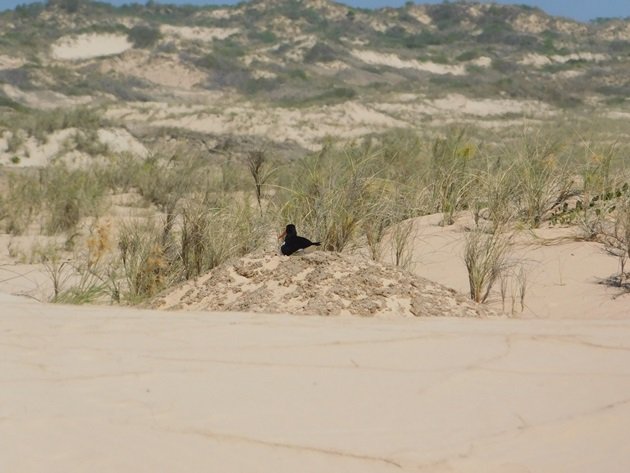
A couple of weeks ago I introduced you to the pair of Pied Oystercatchers that were the first to start breeding along our coast this year. Sadly they were not successful with their first clutch of eggs, but are busily making nest scrapes again. We are hopeful that soon they will have laid another clutch of eggs.
Since then we have had the two pairs of Pied Oystercatchers that breed between the Surf Club and Gantheaume Point lay their first clutch of eggs. They always lay their eggs in the same location each year, so when we only see one adult Pied Oystercatcher at the ocean we know the other is no doubt sitting on eggs at this time of year.
The pair of Pied Oystercatchers that nest about 2 kilometres south of the Surf Club have a particular rocky outcrop that they like to nest on. We know Pied Oystercatchers have used the area since 2000 and most likely for many years before that. The rocky outcrop changes slightly each year as the sand moves around with the wind. It offers great views and the birds can easily see threats from all directions. The main give away of the nest location is all of the footprints leading to it. If it is windy it is an advantage, because the location is harder to find. When you observe Pied Oystercatchers walking fast they are invariably leading you away from their nest site. It is only necessary to visit a nest site once to establish how many eggs there are and then observe the site from a distance.
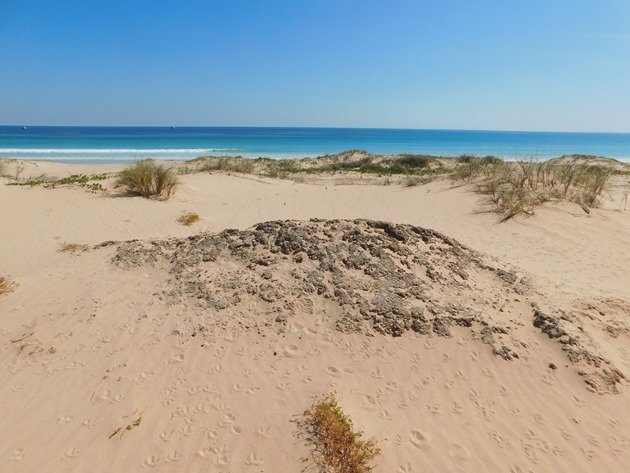
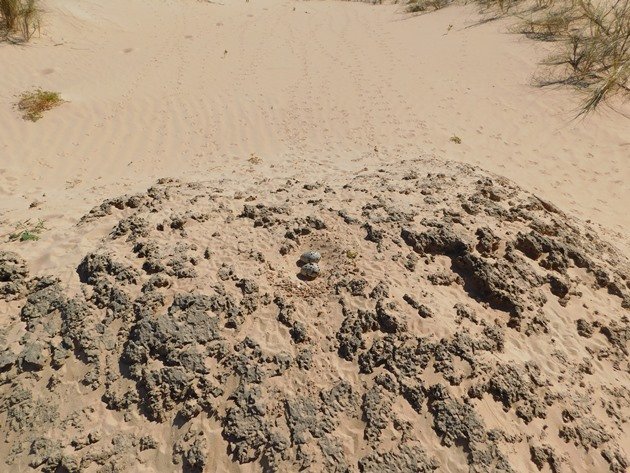
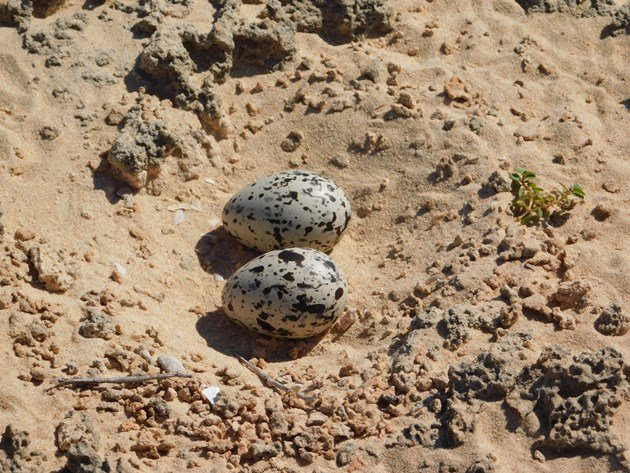
Pied Oystercatcher nest
The other pair of Pied Oystercatchers that breed a few kilometres further south towards Gantheaume Point have also laid their first clutch of eggs. They were successful last year at raising one of the chicks, which is a rare event in Broome. Once again they have chosen the same location and can observe both the dunes and coastline from the nest site. The Pied Oystercatcher footprints are a lot less obvious at this nest site due to the surrounding rocks.
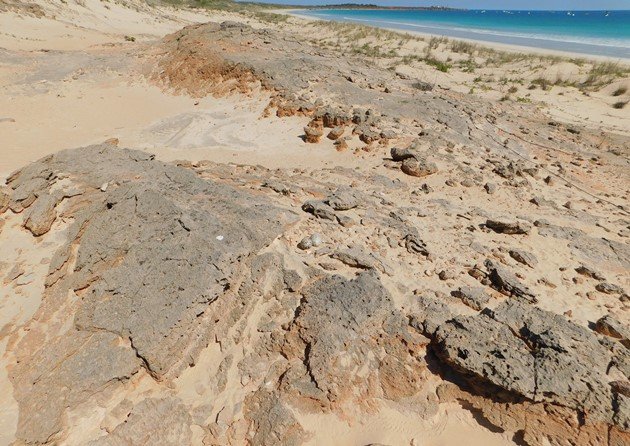
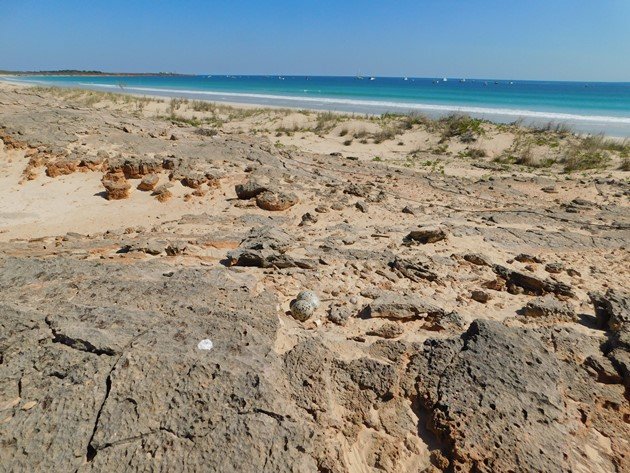
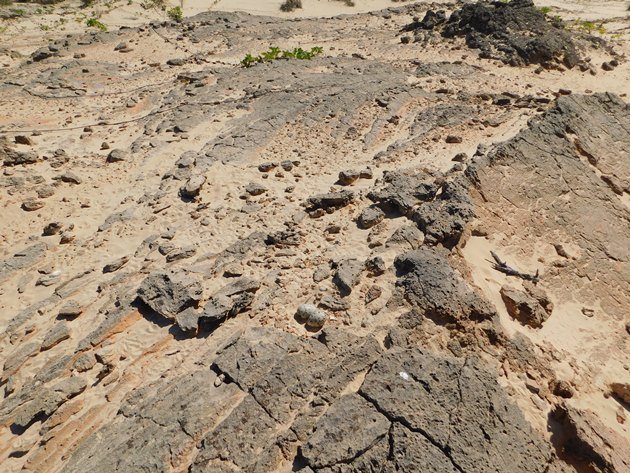
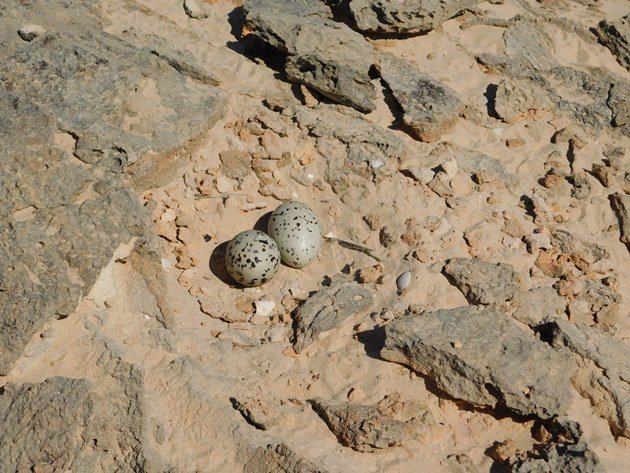
Pied Oystercatcher nest
This week having confirmed the number of eggs, which is usually two in Broome, we moved back and the Pied Oystercatcher returned to sit on the eggs. Both male and female Pied Oystercatchers incubate the eggs for twenty eight days and on warmer days they hover and shade the eggs rather than sit on them.
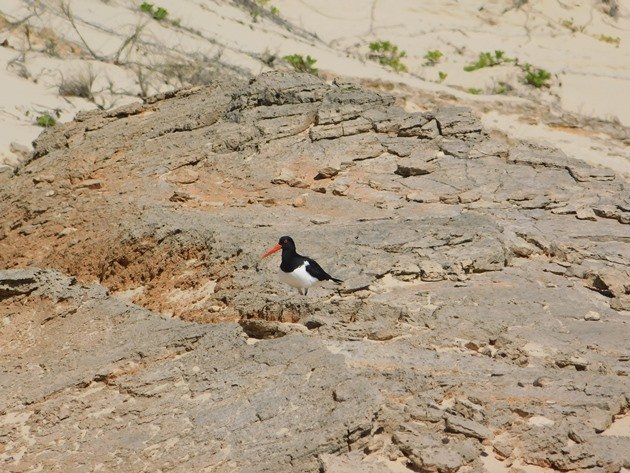
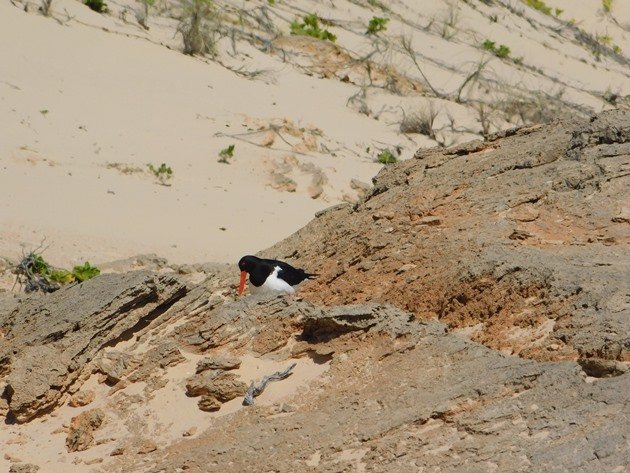
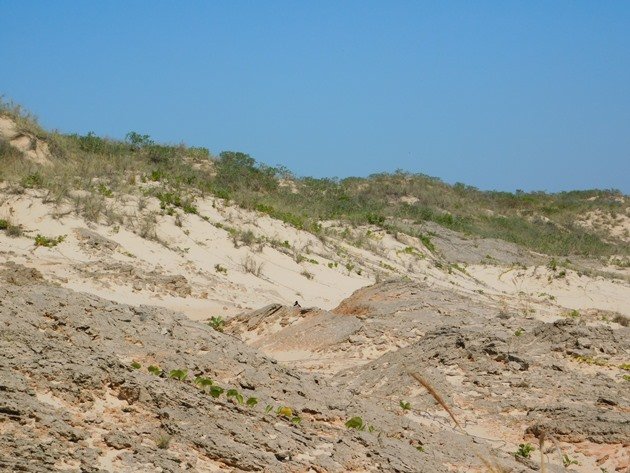
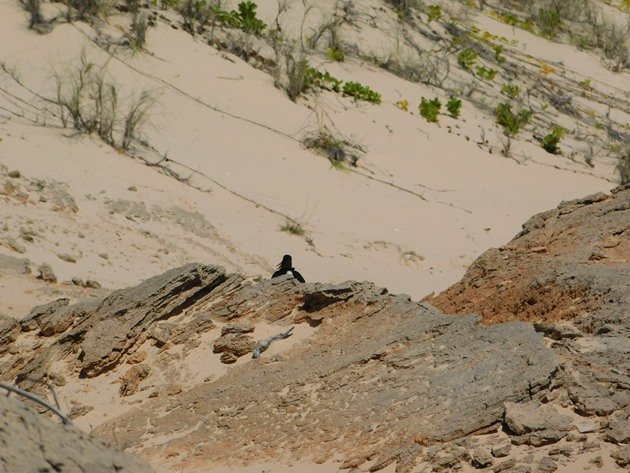
Pied Oystercatcher sitting on the eggs
The nest sites are perfectly positioned for the Pied Oystercatchers to keep their eyes on the sky and the surrounding beach and dunes. It is not somewhere where people generally walk, because they prefer the actual beach. For these two pairs of Pied Oystercatchers the incubating always is the easy part of breeding. However, once they have chicks to protect they have a lot more work to do.
It is only early in the breeding season here right now, but we always hope for the best with all of our breeding attempts along our coastline. Red-capped Plovers are also breeding along our coast at this time of year. The majority of the migratory shorebirds are in the northern hemisphere breeding.













Hi Clare, Thanks for another wonderful update about the Pied Oystercatchers. Keeping my fingers crossed for a successful year for them (and for the Red-Capped Plovers). Here in New Jersey, so far it has been a topsy turvey, often tragic year, for our Piping Plovers but we remain hopeful for some success.
I recently saw on an iNaturalist update some photos of Eastern Osprey in a very rocky place called Mitchell Plateau in WA. Is it far from where you are?
Hi Lisa,
The Mitchell Plateau is about 850kms/530 miles north-east from Broome via a remote gravel road for most of the trip once you head out of Derby. Eastern Ospreys are common around Broome and nest around our coastline. I wrote about them a few years ago now….
https://www.10000birds.com/ospreys-of-broome.htm
Good Luck with your Piping Plovers!